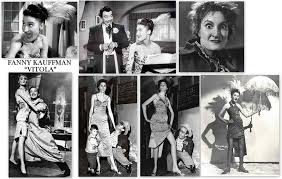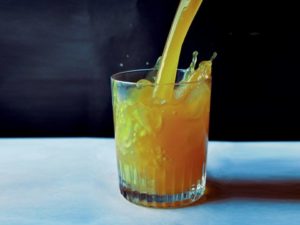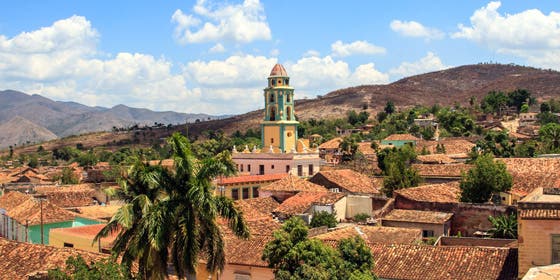FANNIE “VITOLA” KAUFFMAN, FAMOUS ACTRESS AND COMEDIAN. “THE ONE WHO DEFENDS HERSELF”
“Vitola” Kauffman was a Canadian born Cuban actress and comedian born in Ontario on April 11, 1924. She moved with her parents to Cuba and was raised in Havana, where she resided until she was 22 years old. She began her entertainment career in Cuba as a child singer at the age of 8 when she thought of becoming an opera singer.
Kauffman’s parents entered her in a radio contest when she was eleven and a half years old. The contest was looking for a girl to appear on the daily children’s radio show, ‘La Escuelita’. Kauffman won the contest and began appearing on the radio with the Cuban comic team, Agapito y Timoteo. Kauffman earned her lifelong nickname, Vitola, while working in Cuban radio. Her nickname is based on the vitola of Cuban cigars.
ARTISTIC CAREER
Kauffman transitioned to comedy and moved to Mexico in 1943, shortly before she turned 23 years old. In 2007, Kauffman told the newspaper, ‘El Universal’, that though she was raised in Canada and Cuba, she emphasized that, “Soy Mexicana” (I am Mexican), after more than 60 years of residing in the country.
https://youtu.be/uhhXLcSEiVo
Press ^ Here
Fannie “Vitola” Kauffman
She made her Mexican debut at the Teatro Arbeu in Mexico City in 1943. Kauffman met Germán Valdés, who was better known as Tin-Tan while working at the Teatro Arbeu. Kauffman and Tin-Tan developed a close professional relationship that spanned both of their careers. The two often appearing opposite one another on screen and stage.
In 1946, Kauffman launched her film career in the 1946 movie, ‘Se acabaron las mujeres’, directed by Ramón Peón. She co-starred in the 1949 Mexican film, ‘El Rey del Barrio’, opposite Silvia Pinal and Tin-Tan. Kauffman also starred or appeared in films throughout the Golden Age of Mexican cinema, including the 1950 film, También de Dolor se Canta, starring Pedro Infante and films opposite Adalberto Martínez.
Kauffman retired from acting and comedy when she was 72 years old. She explained that she realized she was tired while waiting to go on stage for a performance in New York City. She claimed that she decided to retire on the same day of that particular New York performance. Kauffman also came to believe that audiences no longer laughed at her jokes as they once did earlier in her career.
https://youtu.be/8TOpp_77-Fg
Press ^ Here
Fannie “Vitola” Kauffman
Fannie Kauffman died in the early morning of February 21, 2009, of natural causes at a hospital in Mexico City at the age of 84.
PERSONAL LIFE
Kauffman married three times, with each marriage ending in divorce. She had four sons and a daughter during her three marriages. Her eldest sons, Mexican actor Humberto Elizondo and David, were born during her first marriage to a Mexican diplomat, Humberto Elizondo Alardine. Her two other sons from her second marriage, Moisés, and Abraham, died in separate accidents during the 1980s. She was survived by three of her five children, including Mexican actor, Humberto Elizondo.
AWARDS AND NOMINATIONS
Kauffman had been named a recipient of the 2008 Golden Ariel, the highest award in the Mexican film industry, shortly before her death. She was awarded the Ariel Award posthumously.
FILMOGRAPHY
Selected filmography
Sinbad the Seasick (1950)
Oh, Darling! Look What You’ve Done! (1951)
The Viscount of Monte Cristo (1954)
Bluebeard (1955)
The Phantom of the Operetta (1960)
The Paper Man (1963)
Lola the Truck Driver (1983)
The Kidnapping of Lola (1986)
FANNIE “VITOLA” KAUFFMAN, FAMOSA ACTRIZ Y COMEDIANTE. “LA QUE SE DEFENDE SOLA”. VIDEOS.
“Vitola” Kauffman fue una actriz y comediante cubana nacida en Canadá, el 11 de abril de 1924. Se mudó con sus padres a Cuba y se crió en La Habana, donde residió hasta los 22 años. Comenzó su carrera en el entretenimiento en Cuba como cantante infantil a la edad de 8 años cuando pensó en convertirse en cantante de ópera.
Los padres de Kauffman la inscribieron en un concurso de radio cuando tenía once años y medio. El concurso buscaba una niña para aparecer en el programa de radio infantil diario ‘La Escuelita’. Kauffman ganó el concurso y comenzó a aparecer en la radio con el equipo de cómics cubano, ‘Agapito y Timoteo’. Kauffman se ganó el apodo de toda su vida, Vitola, mientras trabajaba en la radio cubana. Su apodo se basa en la vitola de los puros cubanos.
https://youtu.be/4tcDA6CUzmM
Presione ^ Aqui
Fannie “Vitola” Kauffman
CARRERA ARTÍSTICA
Kauffman hizo la transición a la comedia y se mudó a México en 1943, poco antes de cumplir 23 años. En 2007, Kauffman le dijo al periódico ‘El Universal’ que aunque se crió en Canadá y Cuba, enfatizó que “Soy Mexicana” (soy mexicana), después de más de 60 años de residir en el país.
Hizo su debut mexicano en el Teatro Arbeu de la Ciudad de México en 1943. Kauffman conoció a Germán Valdés, mejor conocido como Tin-Tan mientras trabajaba en el Teatro Arbeu. Kauffman y Tin-Tan desarrollaron una estrecha relación profesional que abarcó ambas carreras. Los dos a menudo aparecen uno frente al otro en la pantalla y el escenario.
En 1946, Kauffman lanzó su carrera cinematográfica en la película de 1946, ‘Se acabaron las mujeres’, dirigida por Ramón Peón. Coprotagonizó la película mexicana de 1949, ‘El Rey del Barrio’, junto a Silvia Pinal y Tin-Tan. Kauffman también protagonizó o apareció en películas a lo largo de la Edad de Oro del cine mexicano, incluida la película de 1950, También de Dolor se Canta, protagonizada por Pedro Infante y películas junto a Adalberto Martínez.
https://youtu.be/CPigTFyIeOc
Presione ^ Aqui
Fannie “Vitola” Kauffman
Kauffman se retiró de la actuación y la comedia cuando tenía 72 años. Explicó que se dio cuenta de que estaba cansada mientras esperaba subir al escenario para una actuación en la ciudad de Nueva York. Afirmó que decidió retirarse el mismo día de esa actuación particular de Nueva York. Kauffman también llegó a creer que el público ya no se reía de sus chistes como lo hacían antes en su carrera.
Fannie Kauffman falleció la madrugada del 21 de febrero de 2009 por causas naturales en un hospital de la Ciudad de México a la edad de 84 años.
VIDA PERSONAL
Kauffman se casó tres veces y cada matrimonio terminó en divorcio. Tuvo cuatro hijos y una hija durante sus tres matrimonios. Sus hijos mayores, el actor mexicano Humberto Elizondo y David, nacieron durante su primer matrimonio con un diplomático mexicano, Humberto Elizondo Alardine. Sus otros dos hijos de su segundo matrimonio, Moisés y Abraham, murieron en accidentes separados durante la década de 1980. Le sobreviven tres de sus cinco hijos, incluido el actor mexicano Humberto Elizondo.
PREMIOS Y NOMINACIONES
Kauffman había sido nombrada ganadora del Ariel de Oro 2008, el premio más alto en la industria cinematográfica mexicana, poco antes de su muerte. Recibió el premio Ariel póstumamente.
FILMOGRAFÍA
Filmografía seleccionada
Simbad el mareado (1950)
¡Oh cariño! ¡Mira lo que has hecho! (1951)
El vizconde de Montecristo (1954)
Barbazul (1955)
El fantasma de la opereta (1960)
El hombre de papel (1963)
Lola la camionera (1983)
El secuestro de Lola (1986)
Agencies/ Wiki/ Various/ Extractos/ Excerpts/ Internet Photos/ YouTube/ Arnoldo Varona/ www.TheCubanHistory.com
THE CUBAN HISTORY, HOLLYWOOD.






























